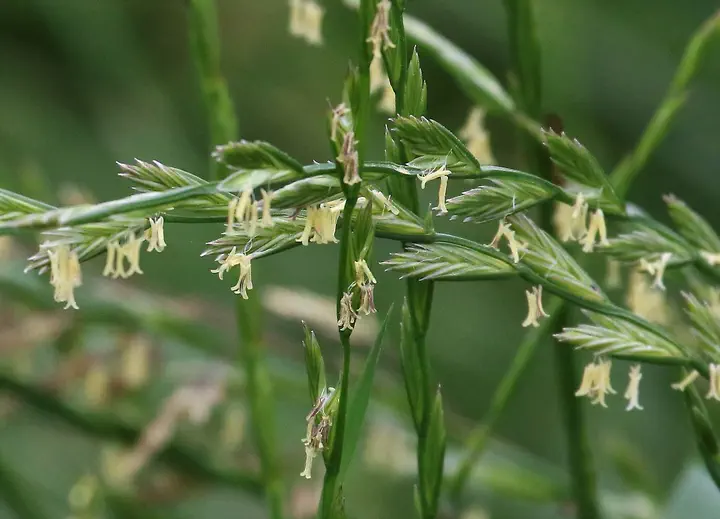Herbicide resistance genetics and evolution in Lolium spp.
 Lolium inflorescence
Lolium inflorescenceThe Lolium genus contains many species of economic importance. L. perenne L. ssp. perenne (L. perenne), L. perenne L. spp. multiflorum (L. multiflorum), and L. rigidum are of particular relevance due to their widespread presence globally. These three species (hereinafter referred collectively to as Lolium spp.) are diploid (2n = 2x = 14), obligate outcrossing, and interfertile grass species that are widely planted for cover crop, turf, and pasture. These species are also considered weeds of agricultural and non-agricultural areas, and exhibit a distinctive ability to rapidly adapt to different environments.
Weed control is one of the most important components of cropping systems that results in significant yield and financial loss to growers if not properly performed. This scenario is exacerbated by the evolution of herbicide resistant weed populations, with 514 unique cases reported globally. Herbicide resistance in Lolium spp. populations has been widely documented. There are at least 125 reports of herbicide resistance in this genus to date, where multiple- and cross-resistance represent approximately 40% of the reports. In some regions of the world where environmental conditions for Lolium spp. development are ideal and there is an overreliance on herbicides as the main weed management tool, proportion of populations with multiple- and cross-resistance may be as high as 61%.
Herbicide resistance in Lolium spp. has been reported to 14 mechanisms of action, with an example of one population of L. rigidum from Australia with evolved resistance to seven mechanisms of action (HRAC/WSSA numbers 1, 2, 3, 8, 15, 13, and 23)
My studies during my MS at Oregon State University focused on the modelling and understanding of the geographical distribution of herbicide resistant populations across the Willamette Valley region. A secondary study was conducted to identify alternative control methods via seed sterilization using synthetic auxins. Both studies were published at Weed Science and Weed technology.
Recently I was also part of a incredible group that wrote a review article about non-target site resistance in Lolium species published at Frontiers plant science.
Currently, I am working with transcriptomics data from multiple populations of Lolium from Europe. This project as being divided into two manuscripts (Currently under review for publication):
Characterization of non-target site resistance in populations of Lolium from Western Europe with focus in the characterization of CYP81A.
Identification of local adaptation patterns in weedy lolium across Western Europe